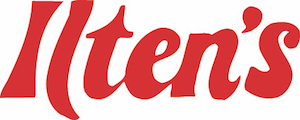
A furnace is almost always a background player in your home, ensuring you're warm across the cold winter months. It often isn't noticed until something breaks down.
One source could be that your furnace has a cracked heat exchanger. It can potentially be hazardous, so it’s critical to familiarize yourself with the signs of a cracked heat exchanger and what you can do if you are worried that might be the problem.
What Is a Heat Exchanger in a Furnace?
A heat exchanger helps transition heat from the combustion chamber of your furnace to the air that circulates throughout the system. It usually handles this via coils or tubes that heat the air while acting as a barrier to keep gas produced in the combustion chamber, called flue gasses, from leaking out into your home.
Is a Cracked Heat Exchanger Dangerous?
Given its key role, it shouldn't come as a surprise that a damaged heat exchanger can be hazardous. Cracks in the heat exchanger can enable dangerous gasses – such as carbon monoxide, which can be lethal – to flow through your home.
For that reason, never run your heater if you believe you're dealing with a cracked heat exchanger, as letting it run could make your entire household ill. Reach out to an HVAC professional right away if you believe your heater has a cracked heat exchanger that needs repair.
Four Signs of a Cracked Heat Exchanger:
- Furnace switches off: Cracks in the heat exchanger could cause your furnace to shut off.
- Unusual Smells: If the air escaping your furnace has a strong chemical scent, it may be evidence gas is seeping through cracks in your heat exchanger. These byproducts, which will often smell like formaldehyde, are a significant warning sign.
- Carbon monoxide alarm is triggered or you notice poisoning symptoms: If a cracked heat exchanger is releasing carbon monoxide inside your home, your carbon monoxide alarm may go off or household members might start experiencing signs of carbon monoxide poisoning. Symptoms include headaches, dizziness, weakness, nausea, vomiting or feeling tired. If your alarm goes off or you feel unwell, exit the home right away and then call for help.
- Soot: If you see black sooty collecting on the exterior of your furnace, it’s more evidence something could be seriously wrong.
What to Do if Your Furnace Heat Exchanger is Cracked
If you believe your furnace has a cracked heat exchanger, contact a professional well versed in furnace installation Cedar Rapids right away so they can inspect your system and, if required, handle a furnace heat exchanger replacement. Costs often vary depending on the situation, but estimates can roughly suggest $1,000 to $3,000.
However, the good news is that heat exchangers are generally covered by the warranty. You’ll want to confirm the warranty paperwork on your furnace, since while the warranty won't always cover the entire cost of repairs, it still may significantly reduce your bill.
How to Avoid a Cracked Heat Exchanger in Your Home
One of the best ways to minimize the risk of problems in your furnace overall is with routine furnace maintenance. Furnaces provide the best possible return on investment when they run efficiently. Calling a skilled professional to examine your furnace for old parts, dirty filters and other likely problems can help you avoid getting a big bill later on.
It’s also helpful to review your furnace filters every few months – it’s encouraged some filters be swapped out every 90 days or sooner if they are dirty or grimy. While the filters aren't a part of the heat exchanger itself, the strain of drawing air through a clogged filter makes your entire furnace work longer to do its job. And the harder your furnace needs to run, the more wear and tear components like the heat exchanger will sustain.
